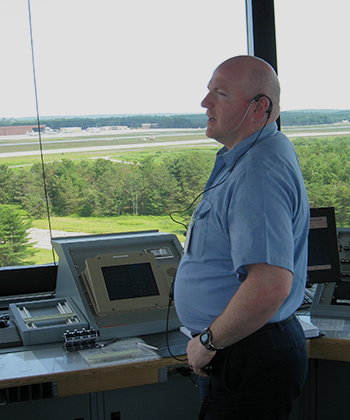Subscriber question:
"When I call ATC to ask for flight following or to land at a towered airport, how much do I say on the first call? Sometimes I feel like I'm jamming up the frequency no matter what I say." — Andy A.
Jeff:
 “The best answer is: It depends. Communication with ATC is partly what you say, and partly how you say it.
“The best answer is: It depends. Communication with ATC is partly what you say, and partly how you say it.
Rule Number One before transmitting on any frequency is tuning that frequency and listening for several seconds. Not only does this reduce the chances you’ll block someone else’s transmission with yours, it lets you know if this is a busy frequency or a quiet one.
When it’s an ATC frequency, also listen to the speed—well, really the rhythm—of the controller’s speech. Match that rhythm and amount of content as best you can. Here’s what I mean.
Imagine you’re calling a Class C Approach Control from 25 miles southwest of the airport, with information Zulu, and want to do pattern work. You tune the Approach frequency and hear the controller tell another airplane, “Cessna 28N, climb and maintain 5000. Contact Newtown Approach now on 124.45. Have great day.” You know this controller isn’t that busy. You could transmit, “Old City Approach, Diamond 3498C, 25 miles southwest of Old City, Information Zulu. Inbound for closed pattern.”
But now imagine when you tuned in to that frequency you heard the controller tell that Cessna, “Cessna 28N, climb and maintain 5000. Contact Newton Approach 124.45.” That’s a different story. In this case, your first transmission might be (after finding a break): “Old City Approach, Diamond 3498C, 25 southwest, request.” Then you wait for the controller to ask you for more details when that controller has time to listen. The follow-up might only include: “Old City Approach, Diamond 3498C, Zulu. Closed pattern.” Transmitting your registration, location, and the word request is acceptable as an opener at any time, so feel free to use it whenever you’re unsure.
Note that in all cases you can omit extraneous words like, “… we’re 25 miles southwest …” or “… we have Information Zulu.” It’s not the end of the world to say those things, but if you practice sticking to the essentials even when using a slow, comfortable pace, you’ll have much less trouble fitting in when things get busy and you cut your transmissions back even tighter.
That’s until the controller asks if it’s a beautiful day up where you are. That’s your invitation to be chatty.”
[Listen to the tip audio to hear the differences in how Jeff says each transmission.]
Can poor pilot communication skills jeopardize the safety of other people on frequency?
